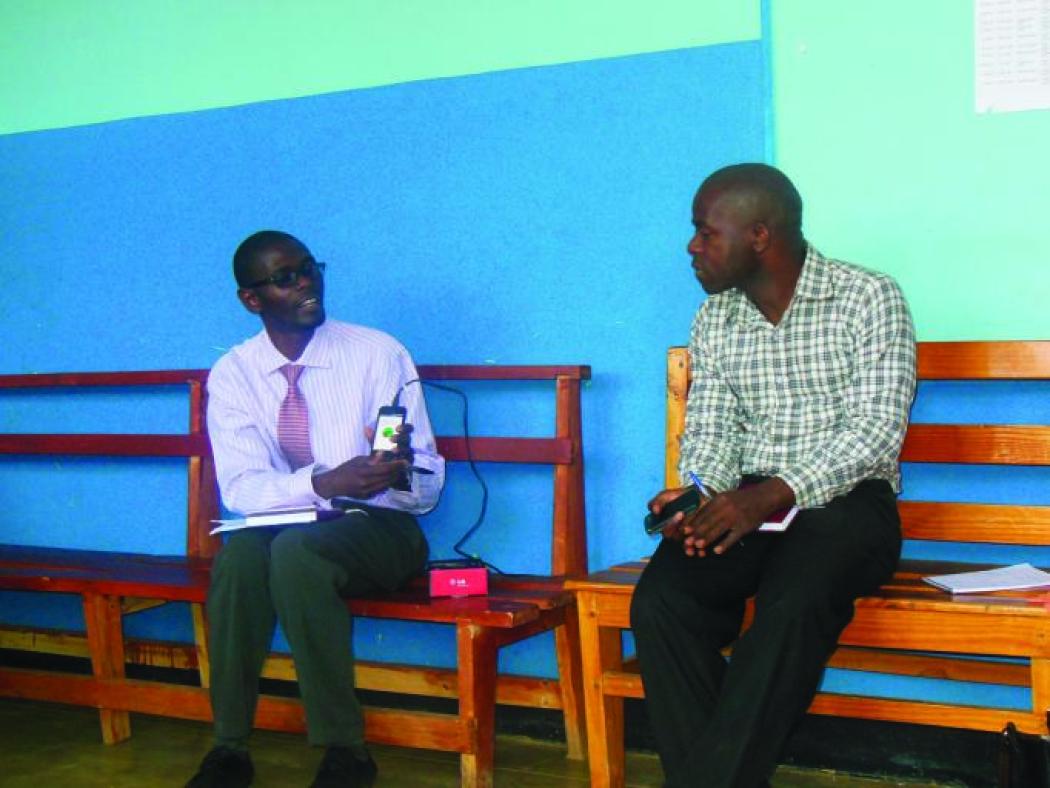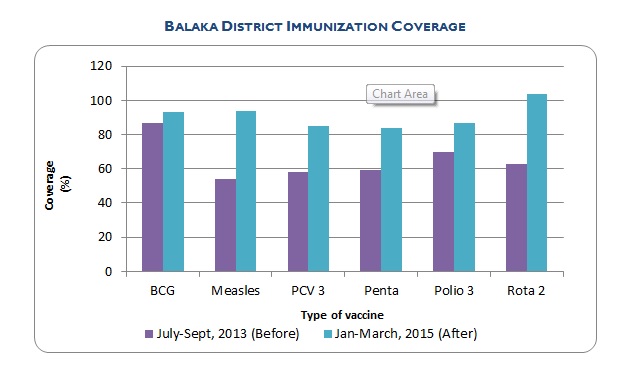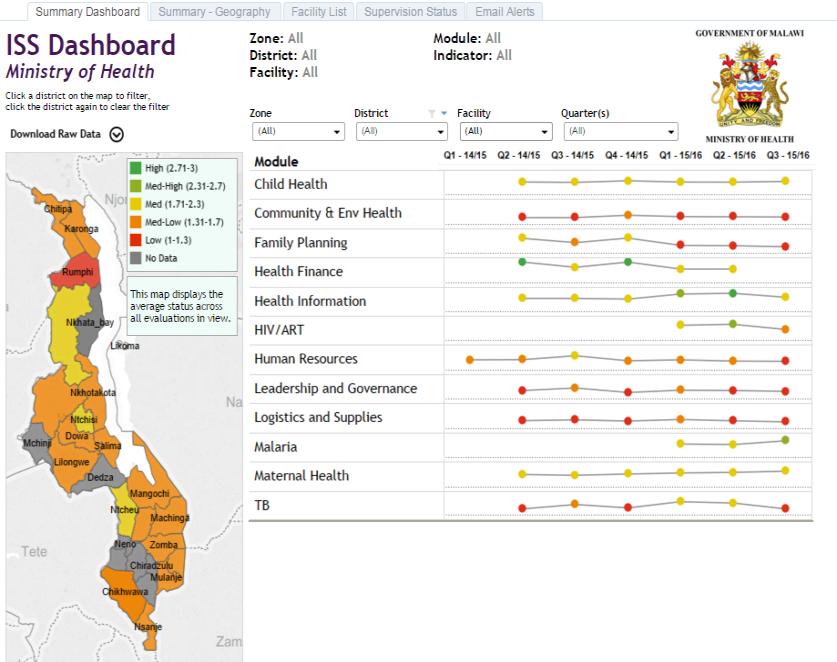Malawi Tracks Essential Health Service Delivery Through USAID-Backed Integrated Supportive Supervision System

Dr. Rabson Kachala, Deputy Director of Sector Wide Approach, explaining supportive supervision results to Dr. Owen Chikhwaza of the Balaka District Health Office. Photo courtesy of Abt Associates.
By Sarah Dominis, Abt Associates
The responsibility of the Malawian Ministry of Health to save and improve the lives of its people relies on data from even the most remote health centers on the quality of services they provide. Thanks in part to the USAID-supported Support for Service Delivery Integration-Systems (SSDI-Systems) project, led by Abt Associates, that data is now flowing in through an integrated electronic system, and service delivery outcomes have already improved in seven Malawian districts.
A key aspect of ensuring quality services is through supportive supervision—regularly visiting health facilities to support the health workers to provide better care. For years, the Ministry’s supervision system relied on multiple visits to facilities by different health programs and focused on inspecting the facility rather than helping frontline health workers solve problems. The system was also paper-based, which led to long delays in providing feedback on performance and little progress in acting upon recommendations.
To address the problems with the system, the Ministry integrated the supportive supervision guidelines from multiple health programs into a single tool. Although the new supportive supervision framework was much improved, the SSDI-Systems project saw that continuing to manage the system using paper-based tools would limit its effectiveness.
Together with the Ministry, SSDI-Systems developed an innovative, smartphone-based tool that was easy for district health officers to use when visiting facilities and gives immediate information on about facility performance to decision-makers.
SSDI-Systems trained nearly 450 Ministry staff in the use of the system, which was rolled-out across the country.
The tool guides the supervisors throughout their visit so that they can support the facility in a holistic way, and uptake has been high. Dr. Owen Chikhwaza of the Balaka District Health Office noted, “Supervision was being conducted by the malaria coordinator, but some important areas were overlooked due to limitations in the paper checklist. We thank SSDI-Systems for introducing the use of smart phone supervision which has revealed the areas which our ordinary checklists were not able to identify.”
The results for each area evaluated are shown immediately to the supervisors in a simple color-coded format so they can provide feedback before leaving the facility. Once the phone is connected to the internet, the results of the supervision visit are uploaded to an online database. An automatic email alert is sent to Ministry-authorized stakeholders.
The Supportive Supervision dashboard, which shows the progress Districts are making in key health areas. Image courtesy of Abt Associates.
In Balaka District, the system has already increased immunization coverage for children under age 1 by strengthening health surveillance supervision in outreach clinics.

Courtesy of Abt Associates.
In several districts, the supportive supervision visits uncovered supplies and equipment that were missing, compromising health services. For example, in Sorgin Health Centre, unsterilized equipment was used on women in labor due to a broken sterilizer, while in Kalemba Community Hospital, the labor and delivery unit did not have a vacuum extractor. Women with obstructed labor (5 out of every 100 in the facility) had to undergo emergency transfers to the district hospital. For both these facilities, once the problem was identified with the help of the supportive supervision tool, the district health management teams were able to purchase the equipment and train frontline health workers in its use.
In another facility, supervisors found that babies were being left, wrapped and without identification, for several hours on tables in the labor ward while waiting for nurses to come and return them to their mothers post cesarean-section. The supervisors helped the hospital develop a system to ensure babies were promptly identified and reunited with their mothers. In follow-up visits, the supervisors found all babies were returned to their mothers within the 60-minute standard.
The system has also increased the number of supervision visits conducted. In June 2014, before implementation, only 20% of targeted district hospitals had received supervision from the zonal health support offices.
By October 2016, after the intervention, 87% of the hospitals and 86% of all targeted facilities had received supervision. With the integrated supportive supervision tool, the Ministry knows the performance of even the most remote health centers on delivery of essential services needed to save and improve lives. Frontline health workers are now receiving the support they need to improve their performance, and improve health outcomes.

